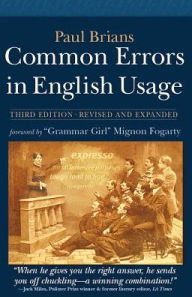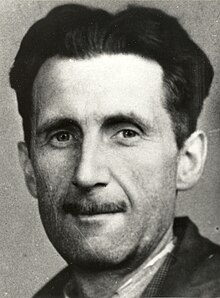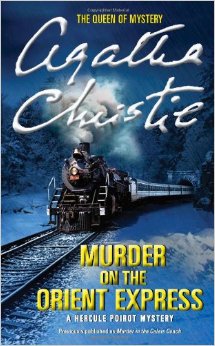
Two weeks ago, I provided a short introduction to the Tovrea Castle, here on SleuthSayers, and I
promised to let you know why this home, built to rather resemble a wedding cake, is connected to intrigue in the mind of Phoenicians.
This week I present the first installment.
As you may recall from my last post (and I'm not planning to test anyone, so don't let your shorts get all bunched up) the house was originally built by Allesio Carraro for use as a hotel. The local cattle king, E.A. Tovrea, later purchased the place, located almost literally right on top of his stockyards, so that his wife and he could move in and use it as their home.
In fact, there was a large stretch of land that Carraro had been hoping to buy off another fellow, in order to build a housing tract associated with his hotel. He also thought this land might help provide a buffer between his hotel and the stockyards. Though both Carraro and Tovrea supposedly offered the owner of that land a similar amount of money, the land went to Tovrea. Carraro's complaints that "the fix was in" didn't prevent old E.A. from promptly building a huge sheep pen on that land, further inundating Carraro in the smell of livestock on his front door, thus pressuring the man to finally sell out.
 |
| Della Tovrea |
As luck would have it, E.A. died about nine months after the move from their previous home at 48th street and Van Buren was completed. His wife, Della, however, continued to live in the house until "her death" as the story goes.
And, the "story" goes further ... at least that part of it whispered from the lips of Phoenicians here in the Great Salt River Valley. To hear folks talk, Della died in that house. Murdered in cold blood. In the dark of night. Trying to defend her home from two intruders. And her ghost now haunts the place, wreaking poltergeist havoc among any small bands of explorers curious to see inside the old house. At midnight on the anniversary of her death, a woman in white is said to be seen waving in distress -- sometimes even wailing weakly for help -- from the roof walk outside the upper room, just below the cupola. Woe unto the man who tries to render her aid, however: as soon as he sets foot inside the house, she flies into a rage, screaming, "INTRUDER! THIEF!" and kills him.
These are the gentle stories I heard about the place as a child, while growing up here in The Valley of the Sun.
For those of you unacquainted with our sweet little valley, let me tell you the following, in order to give you some idea of what it's like here: The Valley of the Sun (which the Navajo rightly call "Hoozdo" meaning "The place is hot." -- that's the truth incidentally; not a joke) is really a huge basin area occupying hundreds of square miles, surrounded by low mountain ranges. This basin was once dominated by the Salt River (and, in a way, it still is). This river, called "Onk Akimel" or "Salty River" by the Akimel (Pima) Tribe, drops 10,000 vertical feet from its origins in the White Mountains (These mountains are the sacred "Dzil Ligai" of the White River Apache Tribe.) to enter the Great Salt River Valley from the east and run across its width, pouring away to the west.
 |
Roosevelt Dam, completed in 1911,
with Theodore Roosevelt Lake behind it. |
The Salt River was dammed up back in the early 20th Century, creating a series of lakes that act as reservoirs, and dams that provide electricity. This was done as part of the National Reclamation Act, and was known as the Salt River Project -- an undertaking roughly akin to the Tennessee Valley Authority.
After all the damming, the part of the Salt River that ran through The Valley was completely dry, except when it rained hard enough (or if snow melt up north raised lake levels far enough) to force employees of Salt River Project (known locally as "SRP") to open the flood gates. At those times, the old Onk Akimel roared deep and muddy.
 |
| Tempe Town Lake |
Today, much of this section of the riverbed is still dry. However, the city of Tempe has built a "lake" in part of the riverbed, by establishing inflatable dams across it that can be deflated and lowered during flood periods when the river needs to run.
When the river isn't running, the city raises the dams and pumps water into the "lake," filling it. They even have some odd plan, which I don't understand, that entails letting water seep out of the east end of the lake, to reestablish a marsh area that once existed here.
But, what, you may ask, does all this have to do with those stories of Della Tovrea's murder and her ghost?
Well, in my opinion, it has almost EVERYTHING to do with BOTH of these things.
You see: They're both bunk! Della Tovrea's death did have violent overtones, but she wasn't murdered. She didn't even die in the house. And her ghost has -- so far as I have been able to ascertain -- never been reportedly seen at the house.
The city now owns the property and runs tours through the place, and certainly no one has ever reported any poltergeist events from this "intrusion." And, I can't find a single source who actually claims to have personally seen old Della's ghost up on the rooftop. Those old-timers who told me these stories have died off, you see.
So, where did these stories come from?
Well, here we come to why I told you about The Great Salt River Valley, and the river from which she draws her name. Both the river and the valley, the physical geography of this desert basin, provide the answer in my opinion. How?
You recall that I told you all those Native American names for the Salt River and the valley it runs through? I did that, because it's natural to do so. You see, Native American culture runs as a sort of life's blood through the entire valley. This Valley of the Sun (Hoozdo in Navajo) is not only hot, it's also a place of ancient human civilization.
And that's no accident.
In the final years of that time period we denote by the initials B.C., the Hohokam -- a prehistoric Native American tribe -- established the first known civilization here. It seems they were lured from within the desert by the Onk Akimel (Salty River). They established large communities in the valley, and over a thousand miles of canals that moved water from the Salt River to their farm fields. The latest remains of the Hohokam indicate that their civilization died out, or significantly changed, around A.D. 1450.
Today, two tribes in the area claim the Hohokam as their ancestors: the Tohono O'odham (meaning Desert People) and the Akimel (meaning River). The Tohono O'odham are often called the Maricopas, while the Akimel are colloquially referred to as the Pimas. These two tribes now share the Salt River Pima Maricopa Indian Community which is very nearly surrounded by the valley cities of Scottsdale, Mesa, Chandler and Fountain Hills.
While only two tribes claim the Hohokam as their ancestors, however, the survival of every living soul in The Valley depends upon this ancient civilization. That's because, in 1867, after rounding up enough backers to make it possible, Jack Swilling (known today as "the founding father of Phoenix") revived several of those ancient Hohokam canals and began selling irrigation water by the board-foot. Over time, he excavated more ancient canals, even building a few new ones, to spread his irrigation business to farms across the valley.
Today, SRP uses those same canals (plus some newer, larger ones) to deliver water to the Phoenix Metro area. Without those canals running along at our feet, all us Valley Dwellers would die of thirst within days. So, while only two tribes claim descent from the Hohokam, all of us here in The Valley of the Sun virtually "swim" (and at times literally swim!) in water provided by the work they did here.
Consequently, Native American culture runs deep and wide across the Great Salt River Basin. It always has, since the day Jack Swilling started promoting their canals as the key to prosperity here. In fact, when I was a kid, I knew a LOT of folks who couldn't really tell me what street they'd been born on. Instead, they told me the "laterals" that intersected nearest to where their family lived at the time. These "laterals" were the canals, and they were numbered. I can't tell you how often I heard old timers wax nostalgically about places such as "Ah, the old intersection of 34 and 55, what a place! What a time!" For them the canals were not only viaducts providing water, but also navigational touchstones they lived their very lives by! They basically lapped up Native American culture every time they took a drink, and they followed it to find their way to school or work, and back home again that night.
 |
| Superstition Mountains |
Add to this, the fact that several tribes live in the area, and their members interact with city folks on a daily basis, and you can quickly understand how large a stamp Native American culture has made upon Valley dwellers. At the east end of the valley, for instance, stand a set of imposing mountains known as the Superstitions. Aptly named: this is where the Apaches had a legendary secret mine from which they dug all their gold; a mine protected by the spirits of dead ancestors. It's also the range in which a certain fellow of supposed Dutch descent wound up disappearing, after he came into town with a lot of very pure gold that he claimed to have dug out of that mine!
 |
| The Cactus Garden |
In fact, the very Saguaros in the Cactus Garden surrounding Tovrea Castle is tied to Native American lore.
Supposedly, saguaro cactus grow where an "Indian Brave" died, and the number of arms on the cactus are commensurate with the number "Bravery Feathers" that brave earned during his lifetime. This is pretty obviously a "White Man's" "Indian Legend" I'd say, in that it makes little sense but it's a nice story, fun to repeat around the campfire, or when taking out-of-towners on a desert tour.
Which is exactly how I think those stories of Della's murder and subsequent hauntings came about. Folks around here are prone to hear "White Man" interpretations of Native American myth, as well as complete fabrications about them. The folks who hear these tales know they probably aren't true, but they make nice stories to share and spread. At the same time, there is a sort of magic here, the magic of water spread evenly across an arid land, turning it lush and green -- a magic rooted in the practices and cultures of ancient Native Americans. A magic so strong, that folks used to locate their very bodies by the canals that magic carved into the earth at their feet.
That's strong stuff, this magic. It's based on ancient myth, ancient truths, modern facts and actions, and it became deeply altered as it all passed from one culture to another -- which didn't dilute that magical feeling one bit. It heightened it instead, made Valley Dwellers ready to see magic in any and everything. And if that little magical story didn't make sense, but sounded good and might be fun to pass along, and maybe even believe in a little bit ... well that was alright too.
But, The facts are these: In late 1968, thieves broke into the house. Della, who was sleeping on a cot in the kitchen at the time, heard them upstairs, and began firing her pistol through the kitchen ceiling, hoping the rounds would come up through the floor on the next level and peg the intruders. Her plan failed, and the thieves tied her up before making off with $50,000 in furs and jewelry. For many years, it was said that the thieves beat and tortured her, trying to get her to reveal details about hidden loot, however a docent working at the castle said that they only tied her up and did not harm her. She died a few months later, at the age of 81, on January 17th, 1969, while in a nursing home. She died from pneumonia, not a beating.
Obviously, there was a crime here. In fact the criminals were later caught and prosecuted; some of the stolen goods were even recovered. But, they didn't murder Della, or even beat her.

I had often heard that the reason the thieves were trying to torture her, was to force Della into revealing the manner in which this artwork on left could be manipulated, in order to open it and reveal a hidden wall safe behind it. Said safe supposedly stuffed with treasure. I don't think that's a likely story either.
So why all the stories? This is the West, with a capital W. Tovrea Castle sits only a short distance from Pueblo Grande, a village built and lived in by ancient Hohokam. The house has an odd look to it, folks were not permitted to visit very often (Della supposedly had that pistol handy because she used it to scare the curious off the property.), and this is a valley steeped in legend. Sometimes those legends have some basis in reality, but others are pure invention, and it can be very hard to tell which is which at times.

And, thus, the truth of a break-in, in which the homeowner is tied up and later dies through non-
associated circumstances, becomes romanticized by members of the public. Tongues wag. And a ghost is born.
I promised not only theft, last week, associated with a Tovrea wife, but also murder. And, there is a murder, it's just not THIS Mrs. Tovrea. I'll tell you all about that one next time!
See you in two weeks!
--Dix
 Well, trust me, that struggle was a pebble compared to the Mount Rushmore that hit Worldcon this year.
Well, trust me, that struggle was a pebble compared to the Mount Rushmore that hit Worldcon this year.  The
Hugo Award nominees and winners are chosen by people who register for
the con (like our Anthony Awards), but for $40 you can buy a supporting
membership. That doesn't entitle you to attend, but it does let
you vote. I am told that approximately 400 people bought
memberships so they could support the Sad Puppy slate.
The
Hugo Award nominees and winners are chosen by people who register for
the con (like our Anthony Awards), but for $40 you can buy a supporting
membership. That doesn't entitle you to attend, but it does let
you vote. I am told that approximately 400 people bought
memberships so they could support the Sad Puppy slate.  "Writing
a short story is a tightrope walk. The craft is getting from one
end to the other. The art is doing a backflip in the middle."
- C.C. Finlay
"Writing
a short story is a tightrope walk. The craft is getting from one
end to the other. The art is doing a backflip in the middle."
- C.C. Finlay
.jpg)








 He was a big man but not more than six feet five inches tall and not wider than a beer truck. His arms hung loose at his sides and a forgotten cigar smoked between his enormous fingers. He was worth looking at. He wore a shaggy borsalino hat, a rough gray sports coat with white golf balls on it for buttons, a brown shirt, a yellow tie, pleated gray flannel slacks and alligator shoes with white explosions on the toes. From his outer breast pocket cascaded a show handkerchief of the same brilliant yellow as his tie. There were a couple of colored feathers tucked into the band of his hat, but he didn't really need them. Even on Central Avenue, not the quietest dressed street in the world, he looked about as inconspicuous as a tarantula on a slice of angel food.
He was a big man but not more than six feet five inches tall and not wider than a beer truck. His arms hung loose at his sides and a forgotten cigar smoked between his enormous fingers. He was worth looking at. He wore a shaggy borsalino hat, a rough gray sports coat with white golf balls on it for buttons, a brown shirt, a yellow tie, pleated gray flannel slacks and alligator shoes with white explosions on the toes. From his outer breast pocket cascaded a show handkerchief of the same brilliant yellow as his tie. There were a couple of colored feathers tucked into the band of his hat, but he didn't really need them. Even on Central Avenue, not the quietest dressed street in the world, he looked about as inconspicuous as a tarantula on a slice of angel food.
























![Pageflex Persona [document: PRS0000037_00019] Pageflex Persona [document: PRS0000037_00019]](https://blogger.googleusercontent.com/img/b/R29vZ2xl/AVvXsEi-MHEB0RUlCWSkHVPsRCVV7EdXADjGa-vYPhWVbu9YqxmKw93vWWko7IrjOvRgdbQ_IbMVt9X4OQpQlP_8Ikfi205UaopK7fC7wwOeRC6lwbg6J6N8qpq6AGwg2MTFyHzQhq-IvscU_44/?imgmax=800)
